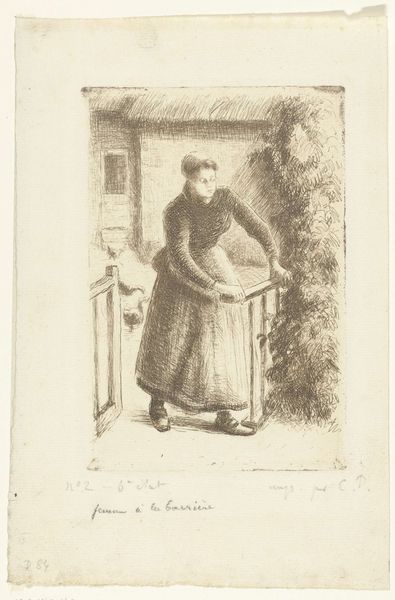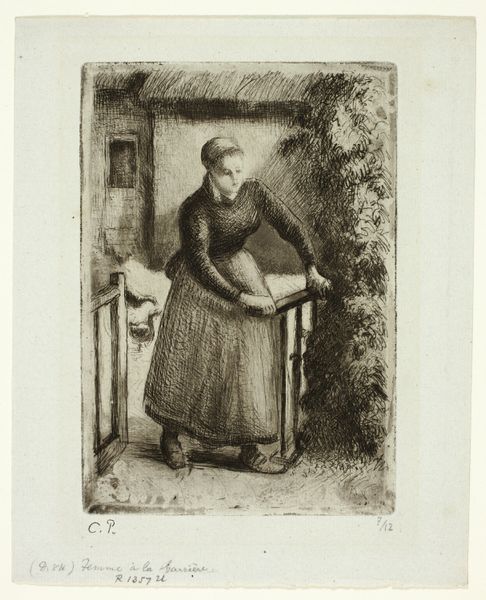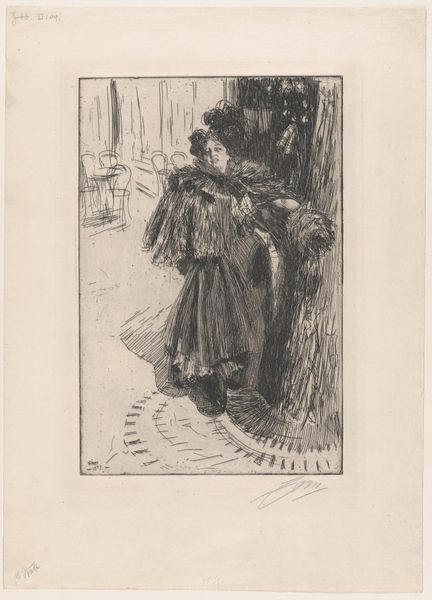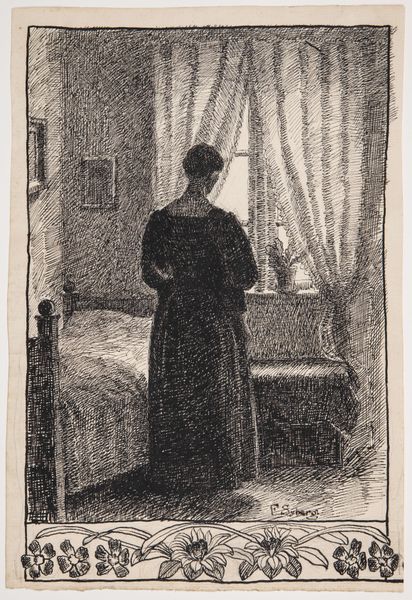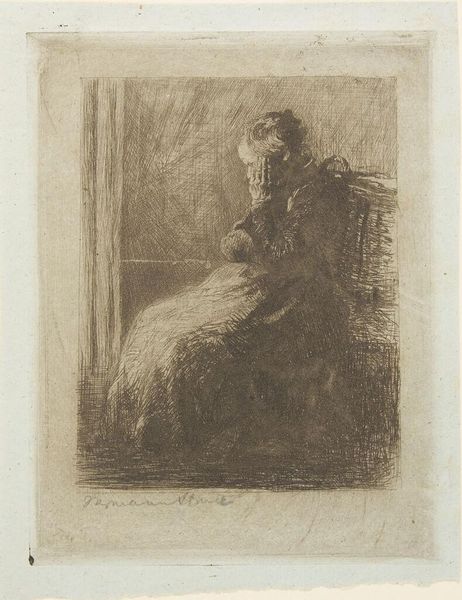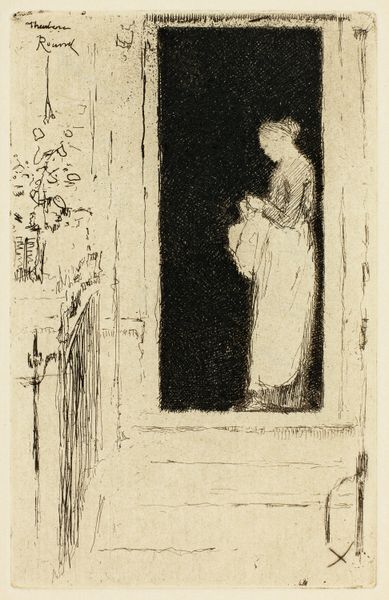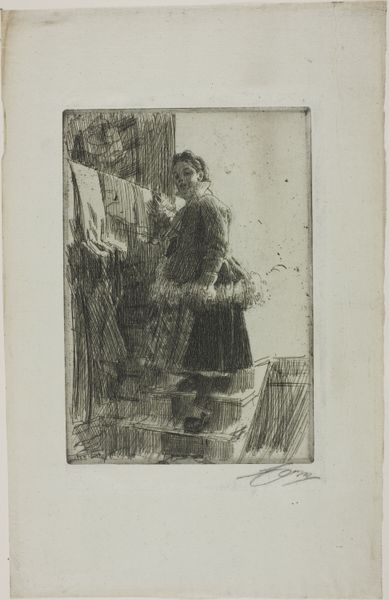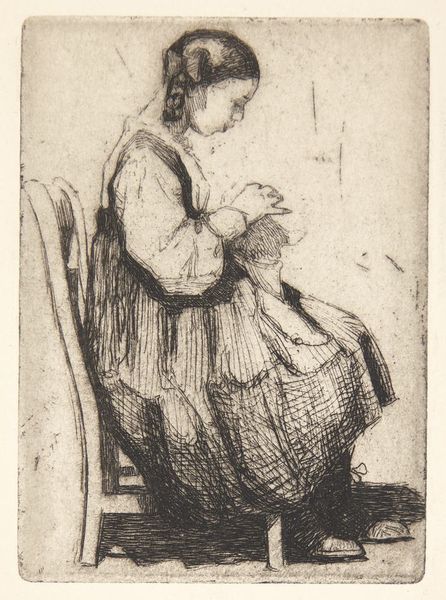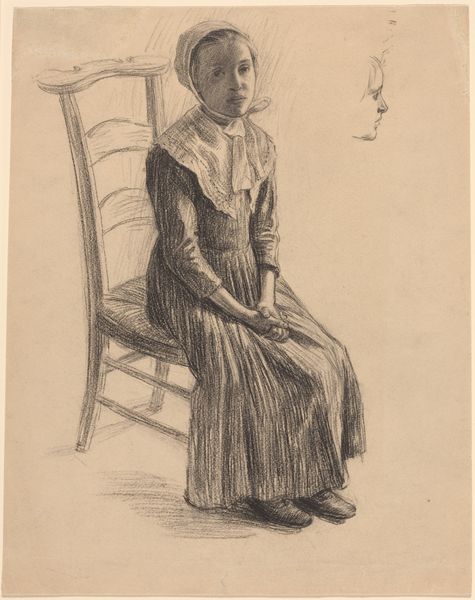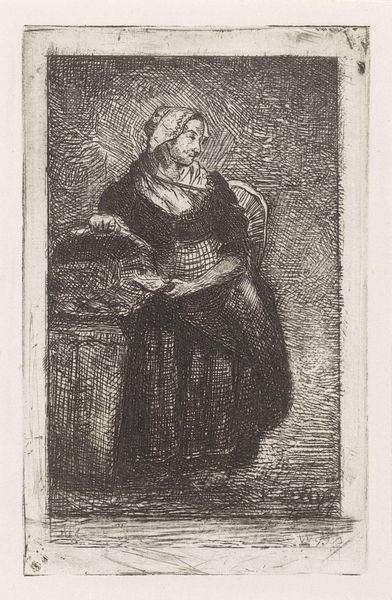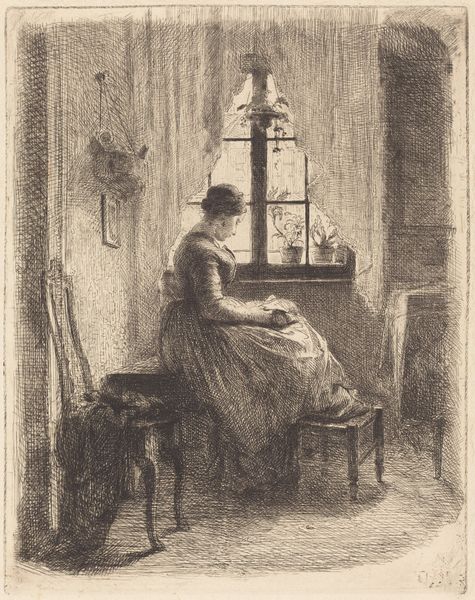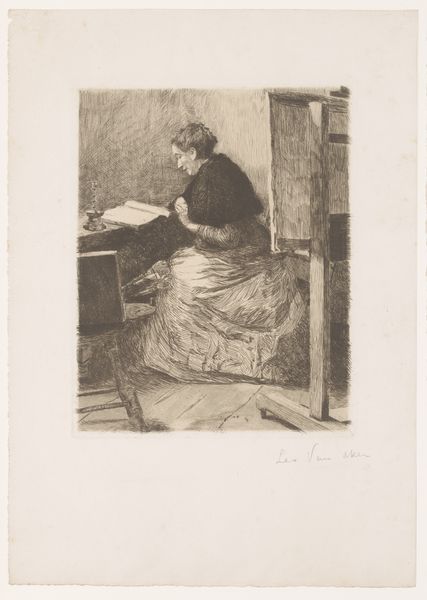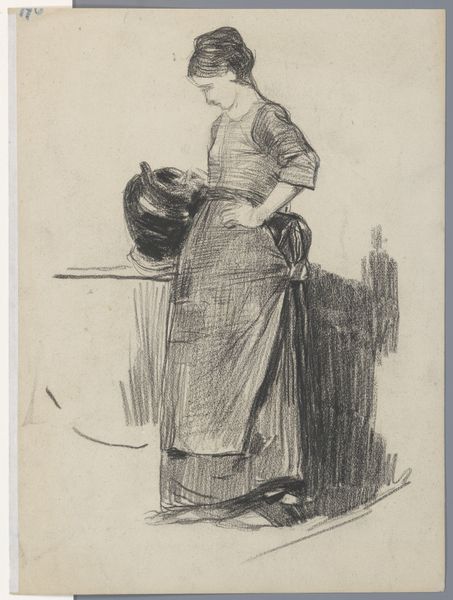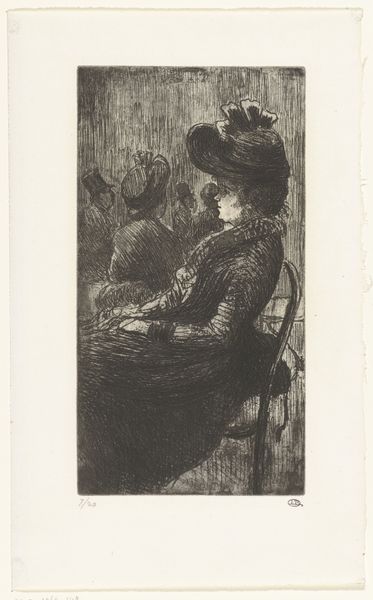
drawing, print, etching
#
portrait
#
drawing
# print
#
impressionism
#
etching
#
landscape
#
figuration
#
genre-painting
Dimensions: sheet: 10 3/8 x 7 3/4 in. (26.4 x 19.7 cm) plate: 6 3/16 x 4 3/16 in. (15.7 x 10.6 cm)
Copyright: Public Domain
Editor: Right, so this is Camille Pissarro's "Woman at the Gate" from 1889. It’s an etching, a print, and the entire scene is rendered in these incredibly delicate lines. I'm really struck by the everydayness of it—a woman just opening a gate. What social context do you think this etching captures? Curator: That's an excellent starting point. I’d argue it offers us a window into the rural, agrarian society that Impressionists like Pissarro often depicted, but with a complexity that goes beyond mere aesthetics. He exhibited alongside Degas and Cassatt in the 1880s. These artists were fascinated with depictions of modern life. The etching shows a woman working or living in the country. It highlights her labour and the importance of their contributions, which were not frequently shown in Academic Salons at this time. Do you see any elements that point to his political inclinations? Editor: Hmm, well, she's not idealized or romanticized, that's for sure. The lines feel very honest, almost documentary. I guess the act of depicting a peasant woman without any idealization is in itself a kind of political statement, pushing back against the more traditional, class-based art world. Curator: Exactly! And notice how the composition emphasizes her connection to the land, literally at the gate between inside and outside. The print becomes part of the broader discussion about labour, class, and representation in late 19th-century France. Did Pissarro consider the artwork's market when producing the etching? Editor: That’s a fascinating angle. It’s an etching so does that suggest this work was more affordable and therefore made to be available to a wider range of potential buyers? Curator: Precisely. Artists like Pissarro, with a political mission in mind, tried different ways to make their work available to people outside the elite classes. Editor: This piece certainly prompts me to reconsider how an apparently simple, pastoral scene could participate in complex socio-political conversations through the lens of its making and the public it tried to reach.
Comments
No comments
Be the first to comment and join the conversation on the ultimate creative platform.
